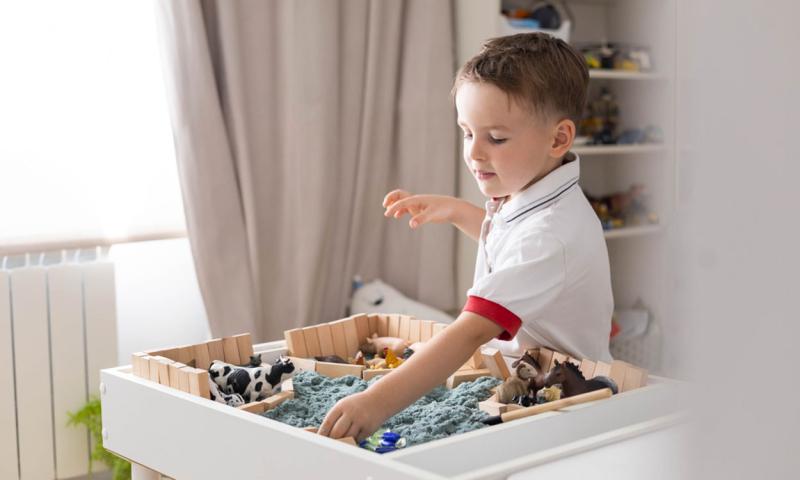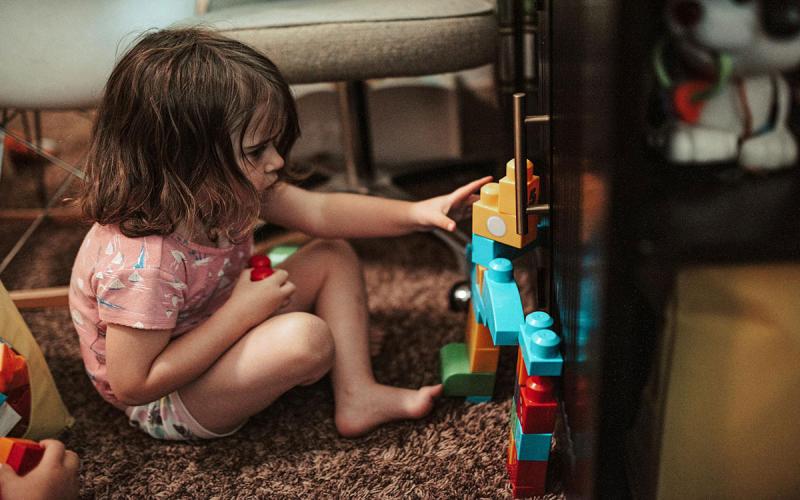Written by Faith Matson under the direction and review of Emily Kranz and Audrey Rider.
Are you looking for fun, creative, and affordable play ideas that will benefit your child? Look no further! Sensory play is a great way to incorporate learning into unique and entertaining activities.
So, what is sensory play? Sensory play consists of any activities that require your child to use their senses (such as touch and sight) to problem solve and play. They can further develop fine motor skills (such as grasping and pouring), independence, critical thinking, and curiosity. Sensory play also allows for breaks from technology, which can dull the senses. According to recreational therapist Suzanne Messer, “When your child engages in sensory play, they’re helping their brain develop and learn from certain aspects of their environment.” In addition, Messer also mentions that “you can use it to stimulate a child who might be a little sluggish. On the other end, sensory play can help a child who might have hyperactivity or trouble paying attention.”
A common misconception among parents is that sensory activities are always messy. While there are benefits to allowing your children to “get messy” occasionally, not all sensory play has to be this way to be beneficial!
Children of all ages can enjoy these activities and become in touch with their senses. You can even join in on the fun and bond with them!
Seven Sensory Activities

Below are seven sensory activities that are affordable and easy (and a few that are a bit messy)!
- Shaving Cream Doodle Pad: This one is great for school-aged children who are learning to read or write, or little ones who love to draw. Take shaving cream and spread it on a hard, easy-to-wipe surface. You can even add food color to the cream to make different fun colors. Ask your child to write (with their finger) their name or other names, the alphabet, or things they like. As for drawing, let their imagination run wild! Tip: You could tape a square on the table and encourage them to keep the shaving cream in the square.
- Save Your Toys: For this one you will need to find some small toys that would fit into an ice cube tray. Put the toys into the tray and freeze them into cubes. Tell your child that he or she has to free their toys from the ice using safe objects, such as a spoon or plastic tools.
- Taste Test: Set up a station where your child, while blindfolded, can attempt to guess which of their favorite snacks or drinks they are tasting!
- Sound Walk: This activity would work great when your child needs a moment to cool down or step away from a situation. Take them outside and have them list the sounds they can hear and encourage them to try to identify them.
- Pom Pom Paradise: Put a lot of colorful pom poms into a container. Give your child a straw and have them suck the pom poms out of the bin with the straw onto a plate. They could sort them by color or see how many they can gather in certain amount of time. Safety Tip: Make sure the pom poms are large enough to not travel through the straw.
- Sensory Bin: Grab a large bin and fill it with dry rice, dried beans, water, or jello. Add beads, small toys, feathers, cotton balls, etcetera. Have your child search for a certain item or let them see what they can find using their hands, feet, or large plastic tweezers. Safety Tip: Monitor your child’s play with the small objects to avoid choking.
- “Oobleck” Goo: Oobleck is a simple mixture of ¾ cups water and 1 cup of cornstarch. When mixed, it creates a goopy mixture that is super fun to play with. “Oobleck” feels solid at first but then melts away in your hands. To make it thicker, just add more cornstarch. You can also add food coloring!
It is amazing how much children can learn by simply playing. Give these activities a try and ignite their senses!
Reference
- What Is Sensory Play? The Benefits for Your Child and Sensory Play Ideas. Cleveland Clinic, Cleveland Clinic, 17 Mar. 2022.


